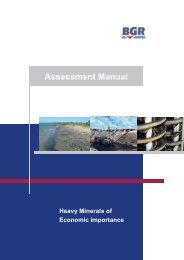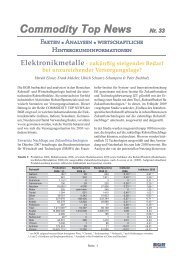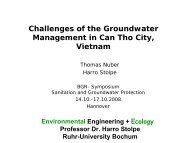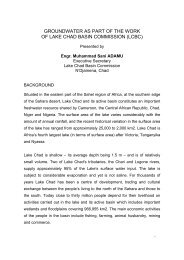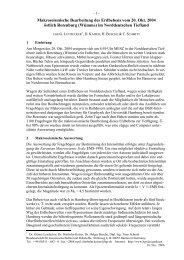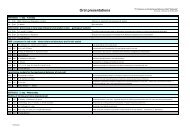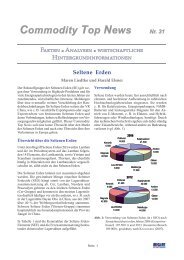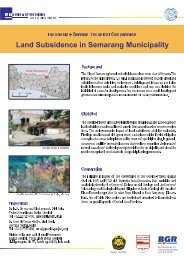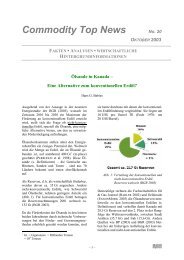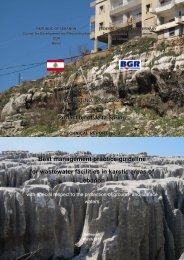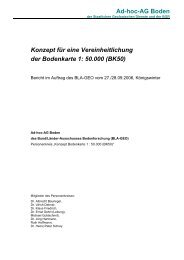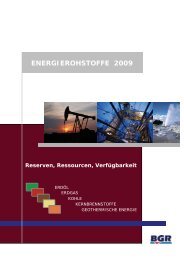THE SMOOTH SOUNDING GRAPH. A Manual for Field Work ... - BGR
THE SMOOTH SOUNDING GRAPH. A Manual for Field Work ... - BGR
THE SMOOTH SOUNDING GRAPH. A Manual for Field Work ... - BGR
Create successful ePaper yourself
Turn your PDF publications into a flip-book with our unique Google optimized e-Paper software.
1. Basic rules<br />
4<br />
The first chapter deals with the fundamentals of direct current resistivity<br />
measurements. The attempt was made to give an elementary introduction<br />
into what really happens within the earth during a measurement. The<br />
physical process should be understood by the reader.<br />
Each physical parameter will be checked with respect to its influence on<br />
the measured data. This will be done by reducing mathematical <strong>for</strong>mulae<br />
to a minimum. A well-trained mathematician will sometimes have a bad<br />
feeling seeing the rigorous way of using mathematical "tools". But this<br />
manual is written <strong>for</strong> a field crew working with modern equipments on the<br />
earth’s surface. Going on step by step in recording data they should follow<br />
up in mind the subsurface process, i.e. they should know what they are<br />
really doing.<br />
One remark should be added: In the theoretical part of this chapter only<br />
one very simple integral appears. The authors would be very glad if read-<br />
ers could make any proposal to get rid of this integral in explaining the<br />
necessary background of direct current resistivity sounding.<br />
1.1. Ohm's Law<br />
Geo-electrical measurements are carried out on the earth's surface. The<br />
air space is assumed as an insulator and the earth's surface as a plane.<br />
The underground is an electrical conductor. A direct current is running<br />
from the surface through this conductive infinite half-space, limited above<br />
by the plane earth's surface. Which laws are valid <strong>for</strong> this current flow<br />
through the underground?<br />
Regarding electrical currents we generally are accustomed to think of a<br />
wire. A wire has a certain resistance which can be calculated from Ohm's<br />
law. We regard (see Fig.1) a wire of the length a, measured in meters [m]<br />
with a cross-section q, measured in [m 2 ]. Ohm's law then can be written<br />
as<br />
U<br />
I<br />
a<br />
= R = ρ<br />
(1)<br />
q



